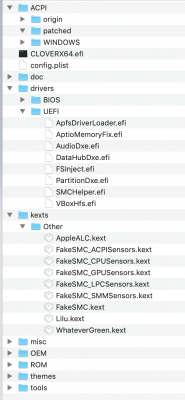- Joined
- Jan 23, 2019
- Messages
- 186
- Motherboard
- Asus ROG MAXIMUS Z370 HERO X
- CPU
- i9-9900K
- Graphics
- Radeon VII
I state that I have a very precise sound monitor system that is sensitive to equalization variations. I am practically always at the PC using headphones, picking up the audio signal from the 3.5mm jack port on the case and in the headphones the bass emphasis is much better supported (even when it's a little too much), I never despised how I listened to a everything, from movies to videos to music (in music, indeed, the bass seemed to me quite pronounced).
I happened to have to watch a movie with another person and so I had to turn on the audio monitors (which otherwise are always off, they will have been turned on 2 times in all since the PC is there and the first time it was just for see if the audio came out, so without paying attention to how the audio actually was.
For a few minutes I put up with it, then the excess of bass that I felt prompted me to do a very simple test: picking up the audio from the audio output of the display that is connected via Display Port and Boom I discovered a difference I didn't expect .
So to go deeper (the film basically made a nice long pause) I picked up the signal from an AirPlay device and it resulted with the same equalization of the output carried by the Display Port: much more balanced between high, medium and above all bass, compared to to the exit called internal speakers (integrated) which alternates with the headphone output on the case.
There is someone who can tell me if it is possible that in MacOs there is a specific equalization that emphasizes the bass very much to make the speakers supplied to the iMacs sound "better" and that is therefore activated only when that specific output is selected in the preferences of system?
A second question: I tried to select in the system preferences the other two voices (analog) that appear to me, simply called Output (audio output port), but on the rear output of the motherboard they do not generate a signal on any output (I tried them all even if it doesn't make any sense). Is there a way to get their audio somewhere? (hoping it doesn't have the same equalization as the internal speakers)
For the moment I can arrange myself using the balanced equalized signal (it seems flat) of the other two possible selections described above (Display Port, AirPlay), but since I am a "curious" audio, I would like to understand something more about the audio configuration that Apple has given to MacOs that apparently, at least for the outputs dedicated to their internal speakers, is not at all flat, unless the motherboard does not apply equalization on its audio output, but it would seem very strange to me. (This last assumption on Apple or Asus could be completely wrong and maybe there is something wrong here on my PC: I'm a beginner in Hackintosh).
I attach the contents of my clover folder (all latest versions of kext, bootloader 5033)
Thanks.
I happened to have to watch a movie with another person and so I had to turn on the audio monitors (which otherwise are always off, they will have been turned on 2 times in all since the PC is there and the first time it was just for see if the audio came out, so without paying attention to how the audio actually was.
For a few minutes I put up with it, then the excess of bass that I felt prompted me to do a very simple test: picking up the audio from the audio output of the display that is connected via Display Port and Boom I discovered a difference I didn't expect .
So to go deeper (the film basically made a nice long pause) I picked up the signal from an AirPlay device and it resulted with the same equalization of the output carried by the Display Port: much more balanced between high, medium and above all bass, compared to to the exit called internal speakers (integrated) which alternates with the headphone output on the case.
There is someone who can tell me if it is possible that in MacOs there is a specific equalization that emphasizes the bass very much to make the speakers supplied to the iMacs sound "better" and that is therefore activated only when that specific output is selected in the preferences of system?
A second question: I tried to select in the system preferences the other two voices (analog) that appear to me, simply called Output (audio output port), but on the rear output of the motherboard they do not generate a signal on any output (I tried them all even if it doesn't make any sense). Is there a way to get their audio somewhere? (hoping it doesn't have the same equalization as the internal speakers)
For the moment I can arrange myself using the balanced equalized signal (it seems flat) of the other two possible selections described above (Display Port, AirPlay), but since I am a "curious" audio, I would like to understand something more about the audio configuration that Apple has given to MacOs that apparently, at least for the outputs dedicated to their internal speakers, is not at all flat, unless the motherboard does not apply equalization on its audio output, but it would seem very strange to me. (This last assumption on Apple or Asus could be completely wrong and maybe there is something wrong here on my PC: I'm a beginner in Hackintosh).
I attach the contents of my clover folder (all latest versions of kext, bootloader 5033)
Thanks.

